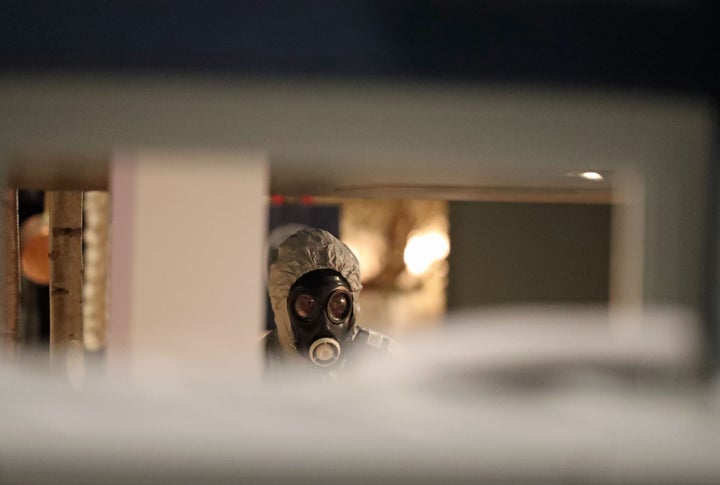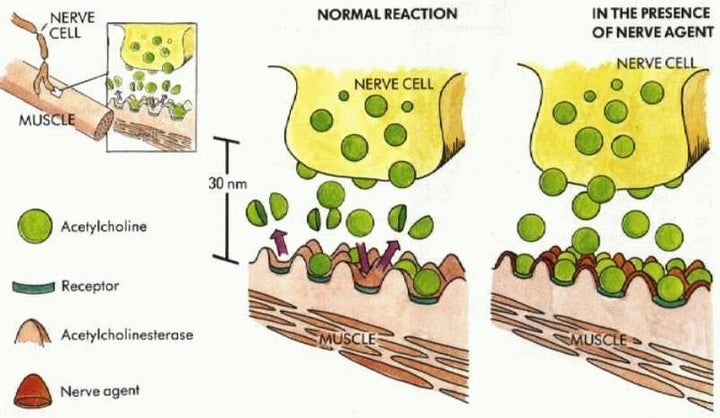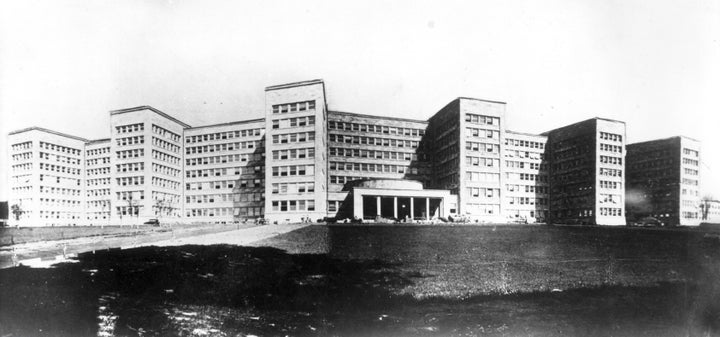UK officials have confirmed a nerve agent was used to deliberately poison a former Russian double agent and his daughter in the town of Salisbury at the weekend.
Sergei Skripal, 66, and Yulia, 33, have been in hospital in a critical condition since they were found unconscious on a bench on Sunday outside a shopping centre.
British media and some politicians have speculated the Russian state could be behind the attack - suggestions dismissed by Moscow who say the allegations are part of an anti-Russian campaign.

Nerve agents have been used to deadly effect in a handful of assassinations and conflicts since being discovered shortly before WWII in Nazi Germany.
What Is A Nerve Agent?
A nerve agent is normally a colourless liquid that can be absorbed through the skin or the respiratory system.
Dr Simon Cotton from the University of Birmingham said: “They interfere with the transmitting of nerve impulses.
“Our bodies use a molecule called acetylcholine that migrates the gaps between cells – it goes from one cell and slots into the second and triggers a nerve impulse.”
The overstimulation of the nervous system commonly leads to twitching, spasms, heart failure and respiratory arrest - think of what happens to a fly when sprayed with insect repellant, which acts in the same way as a nerve agent.
“The body has to get rid of acetylcholine that is docked in the receptor because it builds up and you keep getting nerve impulses and become overstimulated,” Cotton added.

The most common forms of nerve agent are sarin, tabun and the most potent, VX.
Countries known to possess one or more of these chemical weapons are the United States, the United Kingdom, Russia, North Korea, Israel, and Syria.
How Are They Made?
Owing to the cost, equipment and expense involved in producing them, nerve agents are generally held by governments, not individuals.
The exception was in an incident in Japan in 1995 when the Aum Shinrikyo doomsday cult unleashed sarin on the Tokyo subway, killing 13 people and injuring many more
An investigation into the event revealed just how much effort, expertise and money it took to produce the nerve agent.
Aum Shinrikyo spent $30 million (£21.62 million), and had a team of trained scientists, top-class equipment and at least one factory at its disposal.
In addition it benefited from the frankly inexplicable Japanese security climate of the time, which left the cult free to do dangerous and scary things, to purchase and stockpile ingredients and equipment and even to conduct live tests of distribution mechanisms on real victims.
How Are Nerve Agents Administered?
Due to their high toxicity (they are classed as weapons of mass destruction) only a tiny amount needs to be used to have a deadly effect, which means it can be transported easily.
Secondly, they a fast-acting and very often fatal.
In the Tokyo attack, liquid sarin was placed in plastic bags which were pierced by umbrellas with sharpened tips.
Last year the half brother of the North Korean leader was killed in Kuala Lumpur airport, after a cloth doused with VX was smeared on his face.
What Are The Symptoms?
Twitching, spasms, heart failure and respiratory arrest are among the more common side effects.
Dr Cotton added: “It is basically [being] overstimulated to death because of the build-up of acetylcholine.”
This chimes with an eyewitness account of of the Salisbury incident.
Passerby, Freya Church, told the BBC:
“On the bench there was a couple – an older guy and a younger girl. She was leant in on him. It looked like she’d passed out. He was doing some strange hand movements, looking up to the sky. I felt anxious, like I should step in but they looked so out of it. They looked like they had been taking something quite strong.”
When Have They Been Used Before?
The first nerve agent, tabun, was developed accidentally in 1936 by German scientists who were looking for new types of insecticides.
The potentially lethal effects on humans were discovered after a laboratory accident which severely incapacitated a number of scientists.
Inevitably, the Nazi government learned of this incident and soon resources were committed to research the compounds’ potential as a weapon, leading to the development of the much more potent sarin in 1938.

Although Hitler had a substantial supply of nerve agents at his disposal during WWII, they were never used as the Nazi leadership assumed the Allies had also developed them and would have access to far bigger quantities and a chemical attack would lead to a devastating retaliatory strike.
During the Cold War more lethal nerve agents were developed in the US, UK and Russia.

Aside from the Aum Shinrikyo attack noted above, nerve agents have only been deployed on a large scale by Iraq’s Saddam Hussein against the Kurds in 1988 and Syria’s Bashar al-Assad during the ongoing civil war.
